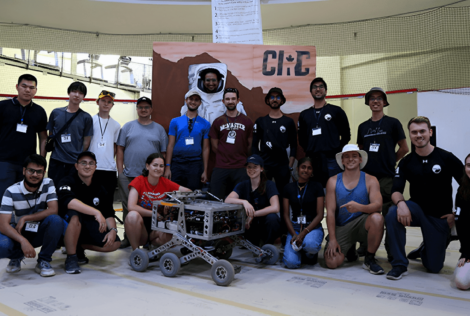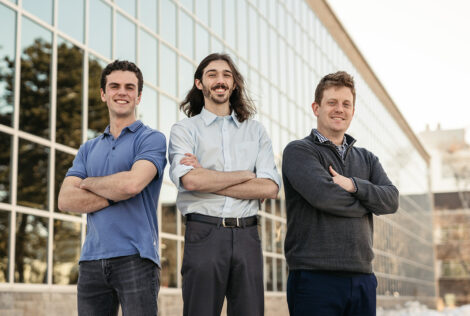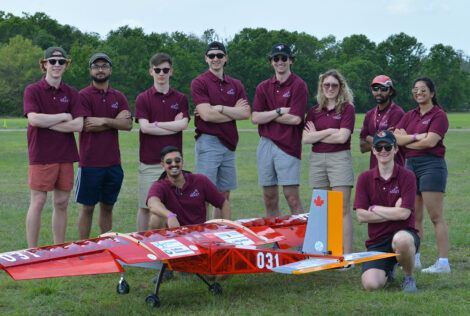
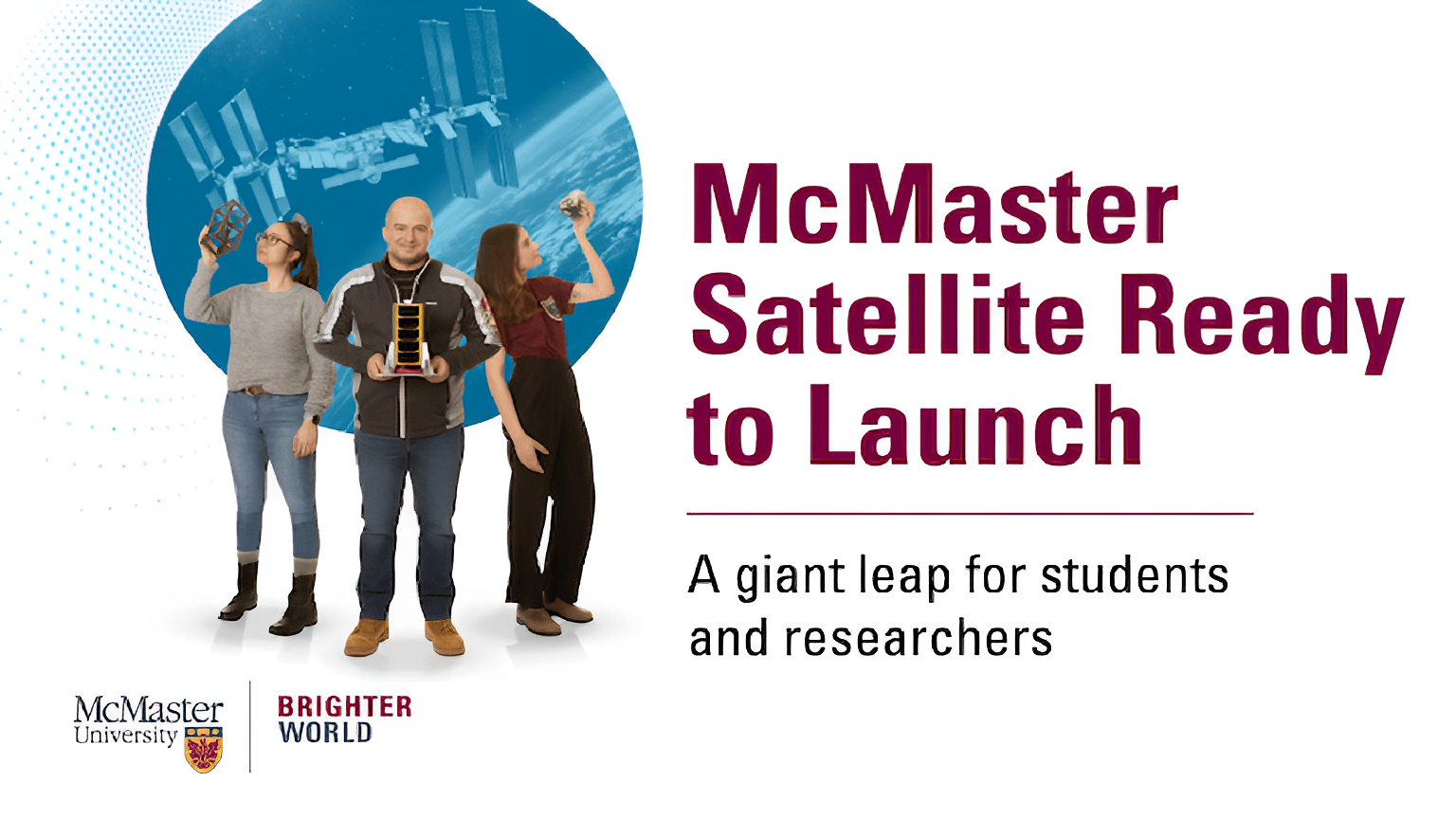
On Tuesday, March 14, the NEUDOSE satellite was successfully launched into space. We caught up with seven members of the Mac Eng community to talk about the roles they played in this monumental achievement.
A team of over 150 McMaster students and researchers have spent the last eight years building a satellite capable of measuring radiation levels in space.
And their satellite has just been launched into space aboard a SpaceX rocket. Its destination: the International Space Station, and finally Low Earth Orbit.
To mark this monumental achievement, we caught up with some members of the Fireball Family who played pivotal roles on the NEUDOSE team to reflect on their time with the project and how it feels knowing something they built is now in space.
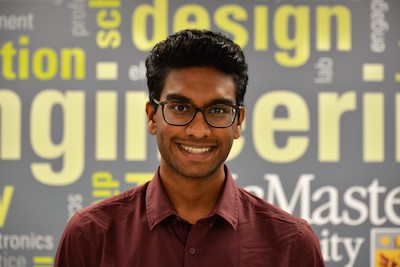
Jonathan Densil, Mechanical Engineering & Management
What is your role on the NEUDOSE team?
I first got involved in NEUDOSE when I joined the thermal team in October 2018, at the start of my second year, and have since had the pleasure of leading the thermal team for the last three and a half years. My role is to ensure that the satellite will be able to withstand and operate during the extreme temperature swings in orbit and that it will fully burn up on re-entry to prevent the risk of human casualties.
How does it feel to know that something you worked on is about to be launched into space?
It feels surreal – almost unreal – like a dream that I don’t want to end, and yet this is reality. It’s such a unique opportunity to see the satellite evolve from a fledgling idea to a fully-fledged satellite. When I joined the team in my second year, we had just been selected by the Canadian Space Agency for their inaugural Canadian CubeSat Project initiative that summer, so being able to see it through to deployment after almost 5 years of dedication is quite incredible. To me, what makes this even more special is that our satellite will be launched on a SpaceX rocket to the International Space Station, and then deployed into orbit by an astronaut, which paints a beautiful picture of the coalescing of academia, private companies and government, coming together to make dreams come true.
If you had one piece of advice for future students looking to get involved in a project like this, what would it be?
Be brave, put your best foot forward and just go for it. Even though I knew about this team in my first year, I didn’t feel like I was good enough or qualified enough to work on a real space mission, so I didn’t apply. It took a paradigm shift to understand that all that was required was drive and passion – which I had in abundance; everything else can be taught on the job.
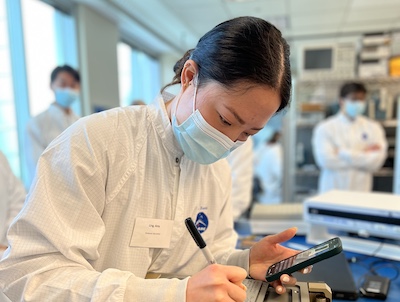
Amy Ling, Chemical and Biomedical Engineering ‘22
What is your role on the NEUDOSE team?
I joined NEUDOSE in 2018 as a 3D CAD designer, became Payload lead in 2020, then Engineering manager in 2021 until I graduated in December 2022.
How does it feel to know that something you worked on is about to be launched into space?
It feels surreal to have worked on a satellite in space! It has been such a cool journey seeing so many stages of development and how much has changed since joining the team. My time on the team was exciting not only because of our satellite going to space, but because of all the incredible people I met along the way. We are so lucky to have inspiring and supportive principal investigators paving the way for the team to succeed. I am so proud of what we have been able to accomplish as a team!
If you had one piece of advice for future students looking to get involved in a project like this, what would it be?
One piece of advice is to keep an open mind and try out as much as possible while there are so many opportunities available. Our interests develop and mature throughout university and getting involved allows us to learn what we enjoy doing and find what we are passionate about.
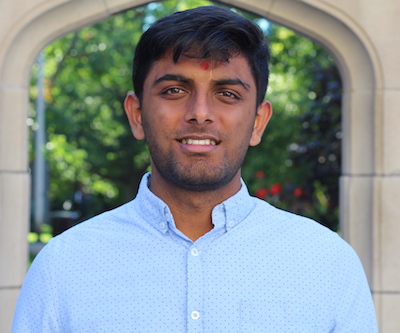
Jay Patel, Software Engineering
What is your role on the NEUDOSE team?
I have held two positions on the team. I was a software specialist and am now the Command & Data Handling Team (CDH) team lead. CDH is the brain of the satellite; it is responsible for maintaining the satellite’s health, processing commands from ground control and creating/storing data collected by the payload.
How does it feel to know that something you worked on is about to be launched into space?
It is truly an extraordinary feeling. I knew I wanted to join the McMaster NEUDOSE team before I had even set foot on the McMaster campus. After four years of hard work, that goal has become a reality. As a team, we have worked tirelessly over the previous year to get launched. The achievement and joy we feel is unparalleled, and now we finally get to sit back and watch our hard work pay off.
If you had one piece of advice for future students looking to get involved in a project like this, what would it be?
This is a cliche, but my one piece of advice is that “you miss every opportunity you don’t take.” Whether applying for a team like NEUDOSE or starting a personal project, you must overlook all your fears and go for it. If you face rejections, work on your resume by doing projects relevant to the team you are trying to join, attend networking sessions and then try again. It may seem overwhelming or intimidating to join a big project, but as a student, you must remember that you are no less or more brilliant than your peers. Keep on trying, because persistence pays off.
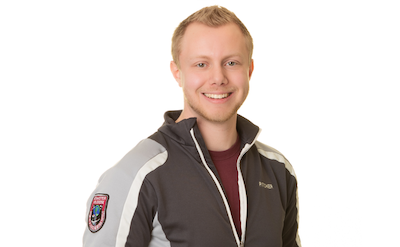
Aaron Pitcher, Electrical and Computer Engineering
What is your role on the NEUDOSE team?
I’ve held many different roles. I’ve been a communications member, I’ve been a communications team lead, and I’m now the senior systems lead and the responsible amateur radio operator for the entire NEUDOSE mission.
How does it feel to know that something you worked on is about to be launched into space?
Absolutely breathtaking. If I had to tell myself at five years old that I would’ve launched something in space, I would’ve said that you’ve been dreaming. There are no words that can honestly comprehend the amount of joy that I’ve had as part of this team. Everyone on this team is extremely talented and the launch of this satellite would not have happened without each and every one of them.
If you had one piece of advice for future students looking to get involved in a project like this, what would it be?
If I had one piece of advice for students it would be to get involved. Reach out, ask questions, try and actually apply what you’ve learned in school to a real-life project, because there’s nothing that can compare to what you’ll learn in the classroom.
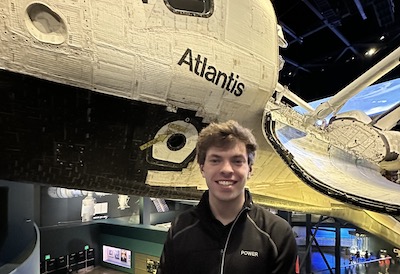
Graham Power, Mechatronics Engineering and Computer Architecture
What is your role on the NEUDOSE team?
I am the firmware developer on the Payload team, responsible for writing the code that collects, formats, and disseminates the scientific data on the scientific instrument.
How does it feel to know that something you worked on is about to be launched into space?
NEUDOSE has been one of the most technically challenging projects I have ever worked on. I learned something new every day, both in my area of expertise and from others outside my area. It feels great to have the opportunity to work alongside other brilliant students to help put a satellite into space. Every day I get to solve real-world problems and work towards such an incredible goal.
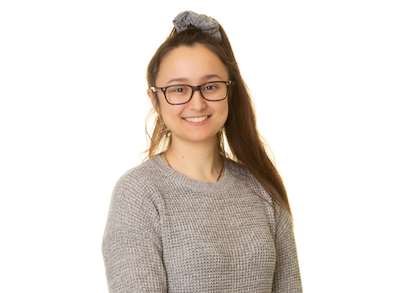
Angela Tollis, Mechanical Engineering and Society
What is your role on the NEUDOSE team?
My time on the team has been mainly on the mechanical structural team. I’ve done both mechanical drawing specialist, which essentially means I make the mechanical drawings to send to our manufacturers, and I do a lot of computer-aided design to model the satellite. Recently, I’ve also taken on the role of mechanical co-lead.
How does it feel to know that something you worked on is about to be launched into space?
Seeing your work and knowing where it’s going, that’s awesome. Something I touched, something that has my name on it on the solar panels along with the rest of the team, something that we manufactured parts of here at McMaster is going to go up into space. It’s quite overwhelming, yet so exciting at the same time. The fact that I worked on those things and it’s going to be up there for so many years is incredible.
If you had one piece of advice for future students looking to get involved in a project like this, what would it be?
I would definitely say just go for it. For me, I’ve always struggled with imposter syndrome, asking myself, “Am I actually good enough to be part of a team like this? I’ve been given this really important task. Can I actually do that? Maybe not. Maybe I’m not good enough for the space industry”. But I think it’s your opportunity to say, “No. I’m going to try it anyway because what’s the point of not trying?” And it’ll take you very far.
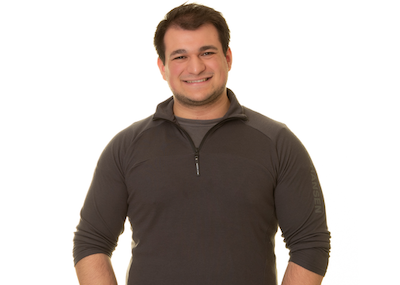
Adam Tosti, Mechanical Engineering
What is your role on the NEUDOSE team?
I was the mechanical lead and now I’m the engineering manager on the NEUDOSE team. The role of the engineering manager is mostly to keep everyone coordinated, make sure the technical stuff is all getting delivered on schedule and making sure that all the teams work together harmoniously.
How does it feel to know that something you worked on is about to be launched into space?
For me to know that parts I helped design and the satellite I helped assemble will not only be in space but help further human knowledge is amazing!
If you had one piece of advice for future students looking to get involved in a project like this, what would it be?
Just go for it. Don’t be nervous about applying. It’s a great opportunity. More than just the technical knowledge you’ll meet great people and make great friends.

